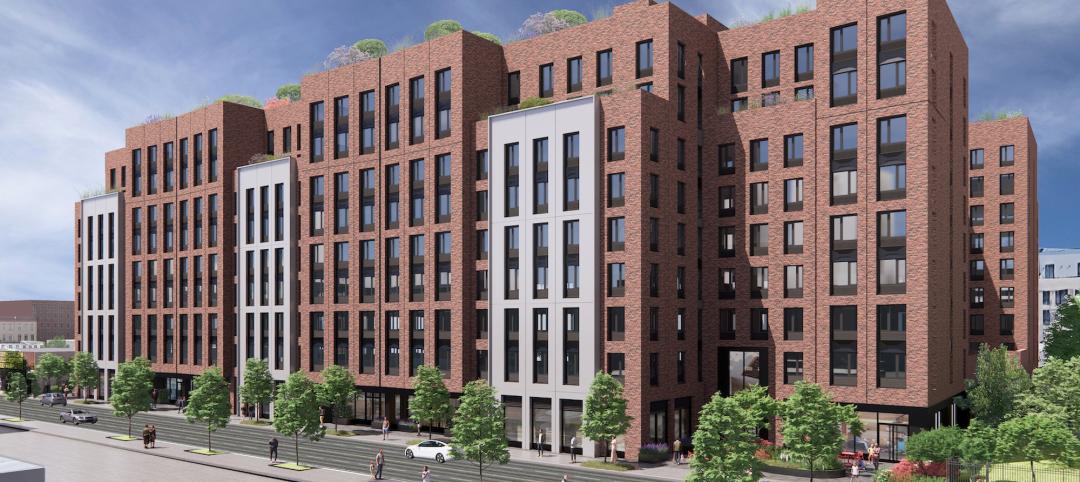In a 2017 report entitled “Strategic Partnerships for Tomorrow’s Health Care,” Sg2 highlights numerous case studies where health systems have engaged in nontraditional partnerships to achieve objectives – including fostering growth and improving performance. In particular, the formation of new community partnerships have helped steer patients to appropriate services, avoid unnecessary Emergency Department (ED) visits, and address the social determinants of health. Conceived and designed with these goals in mind, the Golisano Center for Community Health at Niagara Falls Memorial Medical Center (NFMMC) is improving access to care through the formation of strategic community partnerships.
The Golisano Center for Community Health offers integrated care to adults and children, including developmentally and intellectually disabled and other at-risk individuals, aimed at preventing the local population from “slipping through the cracks” of the healthcare system. Using several guiding principles, the design strategies and operational solutions aim to improve the health and wellness of the community through preventative care and social support.
Reducing ED Utilization for Non-Life Threatening Situations
The adjacent location of the Golisano Center for Community Health provides a direct, physical link to the hospital. A corridor connects the center back to Niagara Falls Memorial Medical Center’s Emergency Department, allowing non-emergent patients that present at the emergency department access to primary care. The primary care clinic offers extended hours that align with the Emergency Department’s high volume timeframes to ensure the right care is available when needed.
Welcoming and Inclusive Community Center
The non-institutional aesthetic of the lobby is intentionally designed at a residential scale to be inviting and welcoming to the public. The lobby spills into the spacious, multi-function waiting area, which includes lounge seating, a café and computer workstations. The center incorporates Universal Design principles, including 7’ corridors, seamless flooring transitions, and non-glare surfaces and lighting, providing a barrier-free, inclusive environment.
Promoting Community Health through Convenience and Collaboration
Per the Department of Health & Human Services Centers for Medicare & Medicaid Services, “efforts to reduce ED use should focus not on merely reducing the number of ED visits, but also on promoting continuous coverage for eligible individuals and improving access to appropriate care settings to better address the health needs of the population.” The Golisano Center for Community Health includes multiple components, which often work together collaboratively, such as integrated primary care and behavioral health, health home care management and care coordination services, social support services for intellectually and developmentally disabled individuals, and community agencies for child advocacy.
More from Author
CannonDesign | Sep 20, 2024
The growing moral responsibility of designing for shade
Elliot Glassman, AIA, NCARB, LEED AP BD+C, CPHD, Building Performance Leader, CannonDesign, makes the argument for architects to consider better shade solutions through these four strategies.
CannonDesign | Jan 3, 2024
Designing better built environments for a neurodiverse world
For most of human history, design has mostly considered “typical users” who are fully able-bodied without clinical or emotional disabilities. The problem with this approach is that it offers a limited perspective on how space can positively or negatively influence someone based on their physical, mental, and sensory abilities.
CannonDesign | Oct 23, 2023
Former munitions plant reimagined as net-zero federal workplace
The General Services Administration (GSA) has embraced adaptive reuse with Building 48, an exciting workplace project that sets new precedents for how the federal government will approach sustainable design.
CannonDesign | Aug 22, 2023
How boldly uniting divergent disciplines boosts students’ career viability
CannonDesign's Charles Smith and Patricia Bou argue that spaces designed for interdisciplinary learning will help fuel a strong, resilient generation of students in an ever-changing economy.
CannonDesign | Jul 10, 2023
The latest pediatric design solutions for our tiniest patients
Pediatric design leaders Julia Jude and Kristie Alexander share several of CannonDesign's latest pediatric projects.
CannonDesign | May 11, 2023
Let's build toward a circular economy
Eric Corey Freed, Director of Sustainability, CannonDesign, discusses the values of well-designed, regenerative buildings.
CannonDesign | Apr 10, 2023
4 ways designers can help chief heat officers reduce climate change risks
Eric Corey Freed, Director of Sustainability, CannonDesign, shares how established designers and recently-emerged chief heat officers (CHO) can collaborate on solutions for alleviating climate change risks.
CannonDesign | Mar 9, 2023
5 laboratory design choices that accelerate scientific discovery
Stephen Blair, director of CannonDesign's Science & Technology Practice, identifies five important design strategies to make the most out of our research laboratories.
CannonDesign | Feb 9, 2023
3 ways building design can elevate bold thinking and entrepreneurial cultures
Mehrdad Yazdani of CannonDesign shares how the visionary design of a University of Utah building can be applied to other building types.
CannonDesign | Jan 9, 2023
How modular solutions can help address skyrocketing construction costs
Modular builder Joshua Mensinger details three ways modular solutions aid in lowering construction costs.
















